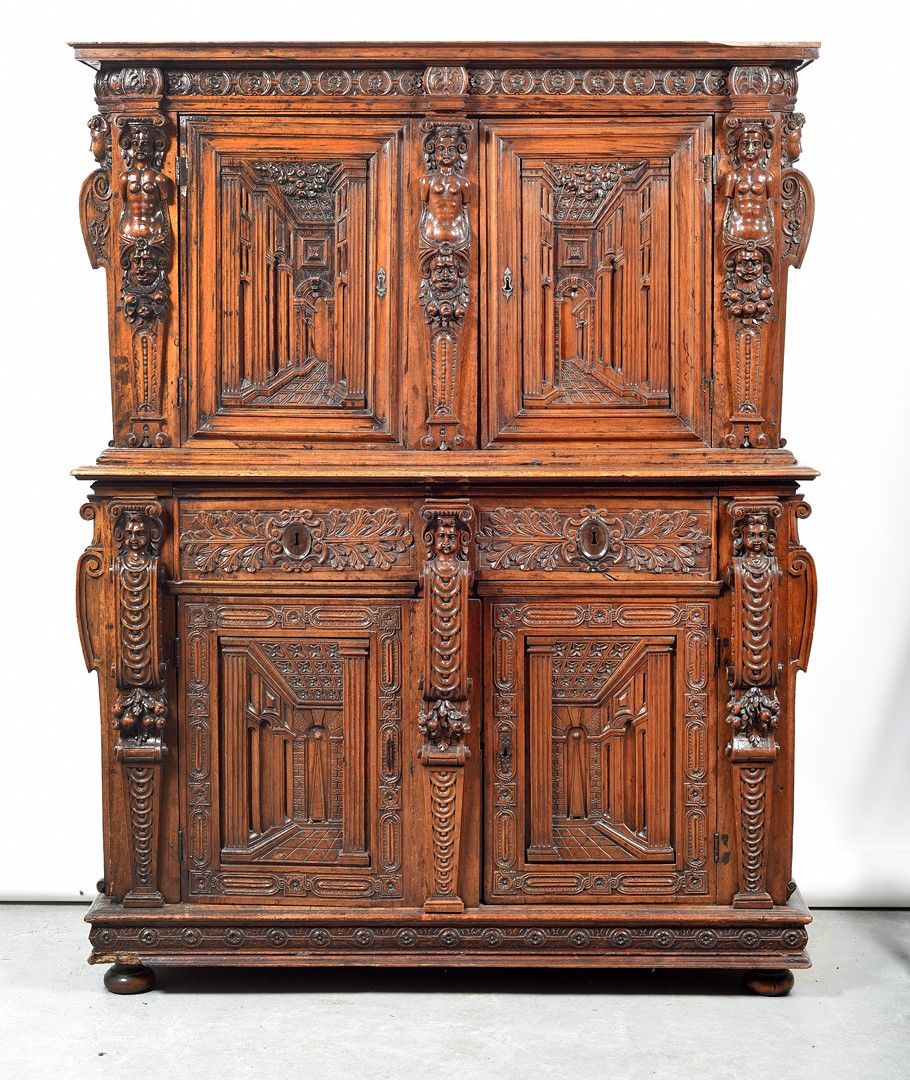Description
Cabinet composed of two carved walnut bodies on the front and sides. It opens in the upper and lower parts with four doors presenting in the front an important bas-relief decoration of palace or theater architecture composed of fluted colonnades that orchestrate a perspective towards a central vanishing point suggested by the lines of the pavement drawn in caissons. The frame, decorated with rosettes of flowers, is adorned with uprights sculpted with terms set on grotesque figures and topped with Ionic capitals, piastres and fruits. The leaves of the upper register reveal an architectural cabinet framed by double fluted columns and drawers. In the belt, a trompe-l'oeil drawer carved with oak leaves opens to reveal a flap forming a writing desk and concealing niches. The leaves of the lower register open by a sliding system of the central post carved with a figure and falls of piastres resuming the decoration of the external posts. The bottom is made of planks assembled with sharp joints. Northern Italy, late 16th century. This cabinet takes up the main decorative elements of the Renaissance born in Florence but developed in Northern Italy at the end of the 16th century. H.195 W.152 D.60 cm (accidents and missing parts).
146
Cabinet composed of two carved walnut bodies on the front and sides. It opens in the upper and lower parts with four doors presenting in the front an important bas-relief decoration of palace or theater architecture composed of fluted colonnades that orchestrate a perspective towards a central vanishing point suggested by the lines of the pavement drawn in caissons. The frame, decorated with rosettes of flowers, is adorned with uprights sculpted with terms set on grotesque figures and topped with Ionic capitals, piastres and fruits. The leaves of the upper register reveal an architectural cabinet framed by double fluted columns and drawers. In the belt, a trompe-l'oeil drawer carved with oak leaves opens to reveal a flap forming a writing desk and concealing niches. The leaves of the lower register open by a sliding system of the central post carved with a figure and falls of piastres resuming the decoration of the external posts. The bottom is made of planks assembled with sharp joints. Northern Italy, late 16th century. This cabinet takes up the main decorative elements of the Renaissance born in Florence but developed in Northern Italy at the end of the 16th century. H.195 W.152 D.60 cm (accidents and missing parts).
